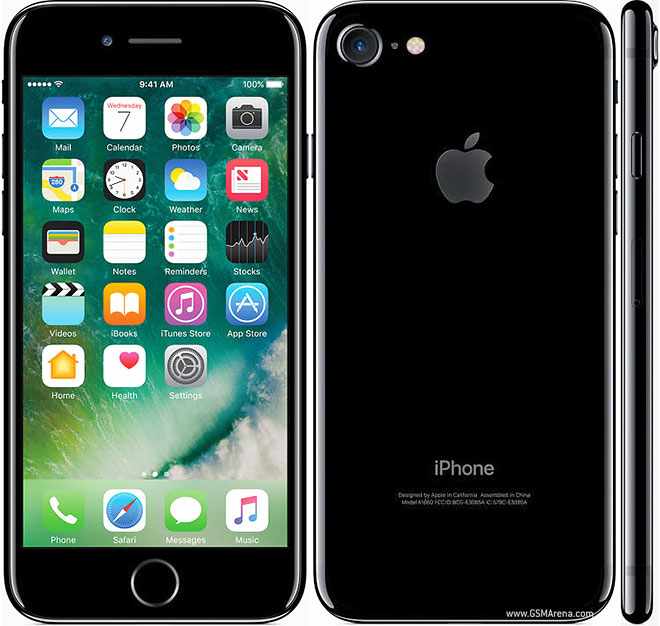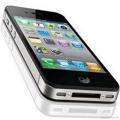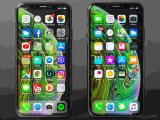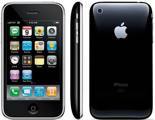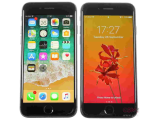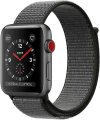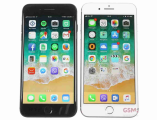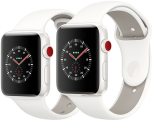
Apple iPhone 7 128 GB Prices
Important Note.
- All prices are in Pakistani Rupee (PKR)
- Prices may vary at stores and our effort will be to provide you with the updated prices.
- The latest price of Apple iPhone 7 128 GB was obtained on 17 مئی, 2019. The prices at the original stores had been updated on the respective mentioned dates.
- Find out WhatMobile price has dropped in Pakistan by selecting Notify Price Drop button
- Find out WhatMobile has better specifications by clicking Add To Compare Button find out what Mobile has better reviews by visiting our reviews section
- Find out WhatMobile is cheaper on which retailer by clicking Compare prices from retailers button
Search Terms
- Apple iPhone 7 128 GB
Specifications
| GENERAL | |
| 2G Network | GSM 850 / 900 / 1800 / 1900 - A1660, A1778 CDMA 800 / 1900 / 2100 - A1660 |
|---|---|
| 3G Network | HSDPA 850 / 900 / 1700(AWS) / 1900 / 2100 - A1660, A1778 CDMA2000 1xEV-DO & TD-SCDMA - A1660 |
| 4G Network | LTE band 1(2100), 2(1900), 3(1800), 4(1700/2100), 5(850), 7(2600), 8(900), 12(700), 13(700), 17(700), 18(800), 19(800), 20(800), 25(1900), 26(850), 27(800), 28(700), 29(700), 30(2300), 38(2600), 39(1900), 40(2300), 41(2500) - A1660, A1778 |
| Sim | Nano-SIM - IP67 certified - dust and water resistant - Water resistant up to 1 meter and 30 minutes - Apple Pay (Visa, MasterCard, AMEX certified) |
| Status | Available. Released 2016, September |
| BODY | |
| Dimensions | 138.3 x 67.1 x 7.1 mm (5.44 x 2.64 x 0.28 in) |
| Weight | 138 g (4.87 oz) |
| DISPLAY | |
| Display Size | 4.7 inches, 60.9 cm2 (~65.6% screen-to-body ratio) |
| Resolution | 750 x 1334 pixels, 16:9 ratio (~326 ppi density) |
| MultiTouch | Yes |
| Protection | Ion-strengthened glass, oleophobic coating - Wide color gamut display - 3D Touch display & home button |
| SOUND | |
| AlertTypes | Vibration, proprietary ringtones |
| LoudSpeaker | Yes, with stereo speakers |
| 3.5mm jack | No - Active noise cancellation with dedicated mic - Lightning to 3.5 mm headphone jack adapter incl. |
| MEMORY | |
| CardSlot | No |
| Internal | 128 GB, 2 GB RAM |
| DATA | |
| GPRS | Yes |
| EDGE | Yes |
| Speed | HSPA 42.2/5.76 Mbps, LTE-A (3CA) Cat9 450/50 Mbps, EV-DO Rev.A 3.1 Mbps |
| WLAN | Wi-Fi 802.11 a/b/g/n/ac, dual-band, hotspot |
| Blue Tooth | 4.2, A2DP, LE |
| NFC | Yes (Apple Pay only) |
| USB | 2.0, proprietary reversible connector |
| CAMERA | |
| Camera Primary | 12 MP (f/1.8, 28mm, 1/3"), phase detection autofocus, OIS, quad-LED dual-tone flash, check quality |
| Camera Features | Geo-tagging, simultaneous 4K video and 8MP image recording, touch focus, face/smile detection, HDR (photo/panorama) |
| CameraVideo | 2160p@30fps, 1080p@30/60/120fps, 720p@240fps, check quality |
| CameraSecondary | 7 MP (f/2.2, 32mm), 1080p@30fps, 720p@240fps, face detection, HDR, panorama |
| FEATURES | |
| OS | iOS 10.0.1, upgradable to iOS 11.2 |
| CPU | Quad-core 2.34 GHz (2x Hurricane + 2x Zephyr) |
| Sensors | Fingerprint (front-mounted), accelerometer, gyro, proximity, compass, barometer |
| Messaging | iMessage, SMS (threaded view), MMS, Email, Push Email |
| Browser | HTML5 (Safari) |
| Radio | No |
| GPS | Yes, with A-GPS, GLONASS, GALILEO, QZSS |
| Java | No |
| Colors | Jet Black, Black, Silver, Gold, Rose Gold, Red |
| Others | - Siri natural language commands and dictation - iCloud cloud service - MP3/WAV/AAX+/AIFF/Apple Lossless player - MP4/H.264 player - Audio/video/photo editor - Document editor |
| BATTERY | |
| Battery | Non-removable Li-Ion 1960 mAh battery (7.45 Wh) |
| TalkTime | Up to 14 h (3G) |
| MISC | |
| SARUS | 1.19 W/kg (head) 1.19 W/kg (body) |
| SAREU | 1.38 W/kg (head) 1.34 W/kg (body) |
Reviews

It took me ages to figure out a title for this review. Mostly because I like the iPhone 7, but also because I know that it isn’t “as good” as Apple could make it. I know the company is holding back on stuff for next year and that means no matter how good this phone is you know, deep down, that Apple deliberately held off on things, saving them for next year.
This is why the iPhone 7 reminds me of expensive vanilla ice cream. Like expensive vanilla ice cream, it is tasty and it definitely does the job. But whenever I am out I never order vanilla ice cream because there are plenty of other, tastier options to choose from. This doesn’t mean vanilla ice cream is bad, just that other combos are, generally speaking, more exciting.
This is basically the story of the iPhone 7: it’s a solid, reliable handset with improvements in all core areas. But, for the life of me, I find it incredibly hard to get excited by this phone, hence the vanilla ice cream reference.
You see, few phones are capable of gobbling up column inches quite like a new iPhone, but this year's offering is perhaps the most talked-about in quite some time – which is unusual when you consider that from a purely aesthetic standpoint, it looks remarkably similar to last year's iPhone 6s and the previous year's iPhone 6.
However, Apple's decision to remove the 3.5mm headphone jack from its 2016 challenger has caused quite a kerfuffle in the tech world, and is surely the one thing the iPhone 7 will be best remembered for in years to come. Which is a shame, because it's by no means the most noteworthy thing about this excellent device.
iPhone 7 Review: Design & Display
There's no getting around the fact that the iPhone 7 is a dead ringer (no pun intended) for the models we saw in 2014 and 2015, but there's a good reason for keeping the same design for a third year – 2017 marks a decade of the iPhone, and we're guessing that Jony Ive and his design team at Cupertino are planning something very special for the next model.
For now, the iPhone 7 represents the most "pure" version of this particular design, and there's nothing really wrong with that unless you're totally sick of phones with rounded edges.
While the core design language has been retained there are some notable differences. Black is the new lead colour this year, with the iPhone 7 coming in matte and glossy variants – the latter of which instantly brings to mind the iPhone 3G, but is apparently quite prone to scratching.
The device lacks a physical home button, and instead offers a circular indentation which, when pressure is applied, triggers the phone's Taptic feedback engine to give the impression of a button being pushed in. It feels very strange when you begin using the phone but after a while it becomes second nature – although I can't really argue that it's genuinely better than the tactile feedback of a proper button.
On the bottom of the phone the 3.5mm headphone jack is conspicuous by its absence, with Apple pointing out that the aforementioned Taptic engine fills the space where the audio jack would normally sit inside the device.
The top edge of the handset is entirely blank, with the power button and volume keys residing on the right and left sides respectively. On the back of the phone, the camera bump is far more pronounced than last year but somehow looks a lot nicer; the metallic lens on both the iPhone 6 and 6s always looked like it was added as an afterthought. Finally, the antenna lines have been pushed up to the top edges of the phone and on the black versions are practically invisible – another welcome aesthetic alteration.
Apple has finally woken up to the benefits of offering a waterproof phone this year, too. The iPhone 7 has IP67 certification and is both dust and water resistant. While that doesn't mean you can keep it in your fish tank overnight, the handset can endure being dunked in water of a depth of up to a meter for 30 minutes. That's more than long enough for those people who are prone to accidentally dropping their expensive phone in the sink or – worse still – the toilet.
The 4.7-inch LED-backlit IPS LCD display remains unchanged from last year, boasting the same resolution of 750 x 1334 pixels. 3D Touch is also included, despite the fact that outside of Apple's own OS and apps, it rarely seems to get used in any meaningful fashion; I keep forgetting it's even a thing for days at a time.
While leading Android phones are offering bigger screens with higher resolutions, Apple has the right idea here. Increasing the number of pixels on a phone's screen is something that only spec-lovers are going to notice; it's impossible to pick out individual pixels on the iPhone 7's display, and by keeping the resolution at the "good enough" level, Apple can avoid placing unnecessary strain on the internal tech and thereby offer blistering performance.
Still, given the price of this phone, 1080p would have been nice. I mean, it is 2016, after all.
iPhone 7 Review: Hardware Specifications
Despite the fact that the iPhone 7 is the first Apple handset to boast a quad-core chipset – something Android manufacturers have offered for years – it follows the usual trend of providing one of the most impressive levels of power seen in any smartphone this year. Apple's custom A10 Fusion is top of the class in almost every test you care to throw at it, leaving rivals like the Qualcomm Snapdragon 821 in its wake. 2GB of RAM is included this time around, with the iPhone 7's larger sibling the 7 Plus benefitting from 3GB.
As you might expect, the iPhone 7 offers improved connectivity across elements such as LTE reception and Bluetooth, but sadly NFC remains limited to Apple Pay, which means it cannot be used to pair devices wirelessly or trigger automated events on the phone using special NFC tags – things which pretty much every NFC-ready Android phone can do. What makes this decision even more puzzling is Apple's decision to remove the headphone jack and steer buyers towards Bluetooth options – many of which now use NFC for quick and painless pairing.
While many buyers may be preparing to put all of their wired headphones in the bin, it's worth pointing out that the iPhone 7 comes with a special adaptor which plugs into the Lightning port on the bottom of the handset and allows you to use 3.5mm options – the phone even ships with a traditional pair of iconic white earbuds. This adapter is useful but it feels like a band-aid, and it's pretty obvious that Apple's decision has a lot to with making money from wireless options, such as its newly-launched £150 AirPods.
iPhone 7 Review: Software & User Experience
iOS 10 ships as standard on the iPhone 7 and comes with some genuinely useful new features. One of the most useful introductions is the "Today" page, which sits on the left-hand side of your main homescreen, rather like Google Now does on stock Android phones, such as the Nexus 6P.
Here you're presented with upcoming tasks from your calendar as well as breaking news stories and the latest stocks and shares. These widgets can be customised so you only have the most relevant information. Notifications now appear in attractive bubbles, while the lockscreen has been altered so you can access the aforementioned "Today" page from there by swiping from left to right, and quickly open the camera by swiping in the opposite direction.
Even 3D Touch is getting more love this time around, assuming you remember that it even exists. Pushing down on an app icon now offers more options, including special widgets for apps that support them. Force pressing on notifications opens them up into "Rich Notifications" (Apple's term, not ours) so you can respond to messages without even having to open the application it has come from, which is really useful – again, the catch is mentally conditioning yourself to remember 3D Touch allows you to do this.
While Android has come on leaps and bounds in terms of the overall user experience and the speed of the UI, it still can't compare to the slick feel of iOS. Everything is so responsive and smooth that it's easy to forgive the really annoying things, such as the inability to download videos to the phone outside of iTunes, or change your text tone or ringtone without having to connect to your computer and perform some arcane ceremony – these are things which have been possible on Google's OS for years.
iOS remains locked down in a lot of ways and if you're used to using Android – which I am – then there's plenty to find slightly maddening here, but that's the sacrifice you make for such a stable and buttery-smooth experience. Because Apple has complete control over the entire hardware and software configuration, everything just works – even if you're still limited in a lot of frustrating ways.
iPhone 7 Review: Camera
First things first, Apple hasn't been able to include a camera sensor which sits flush with the phone's body, despite the fact that rivals such as Sony and Xiaomi have done just that in recent years. The iPhone 7's camera module protrudes from the back of the device, but the hill-like bump is actually quite pleasant to the eye.
This year's 12MP snapper has an f/1.8 aperture which means that around 50% more light is able to make its way into the lens. There's also optical image stabilisation, a feature which was exclusive to the iPhone 6s Plus last year. Add to this a Quad-LED True Tone flash and the iPhone 7's photographic powers are clearly superior to last year's offering.
Apple claims the iPhone 7 is 60 percent faster than the iPhone 6s when it comes to focusing and capturing a snap, but the 6s was already so swift it's almost impossible to truly verify this boast.
All you need to know is that Samsung aside, Apple has no equal when it comes to smartphone photography. The iPhone 7 not only takes shots in an astonishingly short amount of time, it also produces excellent quality images with realistic colours, good exposure and convincing contrast.
The optical image stabilisation and wide aperture also make this one of the best low-light cameras you'll find on a smartphone. The front-facing selfie camera clocks in at 7 megapixels and uses the phone's screen as a flash, which is a neat touch.
Video wise, the iPhone 7 is capable of recording 2160p videos at 30 frames a second. You can also capture 1080p videos at either 30 or 60 fps, and there's a slow-mo mode which records 1080p footage at 120 fps or 720p at 240 fps. The front-facing camera can record 1080p video.
iPhone 7 Review: Memory and Battery Life
Apple came under fire last year for offering the iPhone 6s in a 16GB variant, but this year the starting capacity is a more roomy 32GB, with 128GB and 256GB options also on offer at higher price tags. As ever, there's no way to increase this storage total via cards, although Apple does offer 5GB of iCloud storage free of charge, and you can also make use of cloud options such as Dropbox and Google Drive to free up space.
The iPhone 7's 1960 mAh battery might sound quite wimpy when compared to its Android rivals – many of which sport power cells clocking in at 3000 mAh or more – but it's still a slight gain over the 6s and the more power efficient A10 chipset means that staying power is a little up on last year's model.
Heavy use will see the battery drain before the end of the day, so stamina remains an area where Apple could do better. It's also massively disappointing that the company is yet to embrace any kind of quick or wireless charging options, especially when these have been available to Android buyers for a while.
iPhone 7 Review: Conclusion
The iPhone 7 had the potential to be a really divisive release for Apple thanks to the decision to remove the 3.5mm headphone socket, but it's been interesting to see how quickly I personally adapted to this change.
I already owned a pair of Bluetooth headphones and I'm firmly of the opinion that wires are a pain in the posterior, so Apple's vision of our mobile audio future certainly has a lot going for it. Others may find the transition a little more painful – especially those with expensive wired headphones – but ultimately it feels like a step in the right direction (and other phone makers, such as Turing Robotic Industries, are already ditching the 3.5mm audio jack as well).
Ironically Apple has chosen to remove the jack on what is otherwise one of its most conservative updates ever; the iPhone 7 looks very similar to last year's offering, which makes us suspect that the company has something very special planned for next year and the 10th anniversary of the iPhone. Even so, it's impossible to be too annoyed when the design is as refined as this, and the addition of waterproofing is a welcome one that finally gives Apple fans a feature that Android owners have enjoyed for ages.
When it comes to raw power, that's where the iPhone 7 really impresses. This is the most powerful phone I've used this year, and try as I might I couldn't make it break a sweat regardless of the tasks I threw in its direction.
3D gaming is particularly smooth on this phone, while web-browsing and video streaming are blistering fast. Enhancements introduced in iOS 10 are welcome, too; Apple's software remains the most polished option on the market, even if the lack of customisation will be slightly bewildering to those moving over from Android.
Simply put, the iPhone 7 is one of the best phones money can buy right now. It combines premium components with stunning power, a great camera, superb app support, waterproofing and much more besides. The design may not convince people to defect to iOS if they've managed to resist over the past two years and some form of fast charging would have been welcome, but seasoned Apple fans will appreciate the gradual refinement. Next year's phone may well make a bigger splash, but in the meantime this is a worthy upgrade.
Best iPhone 7 Deals For UK Punters
24 Month Contract Deals
- iPhone 7 32GB Black + 10GB Data + Unlimited Calls & Texts – £40.99
- iPhone 7 32GB Black + 30GB Data + Unlimited Calls & Texts – £44.00
- iPhone 7 32GB Rose + 12GB Data + Unlimited Calls & Texts – £47.00
- iPhone 7 32GB Silver + 10GB Data + Unlimited Calls & Texts – £40.99
Thanks to Mobile Fun for supplying the Apple iPhone 7 used in this review.
Write Your Own Review
My Recent Reviews
- Be first to post review for this product.
comments powered by Disqus




